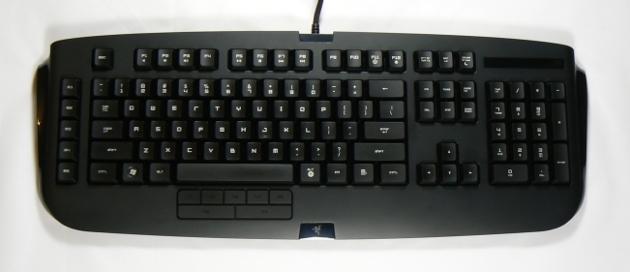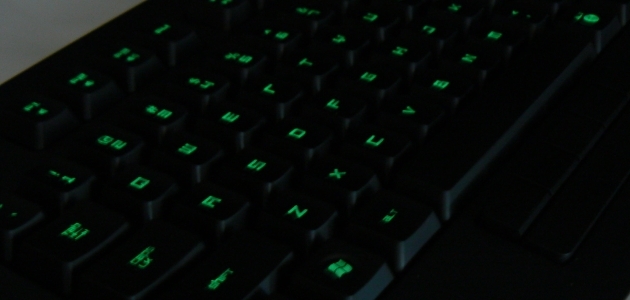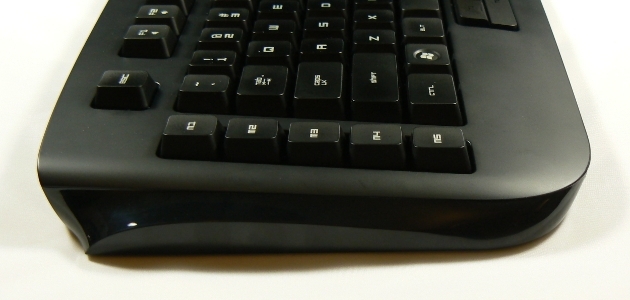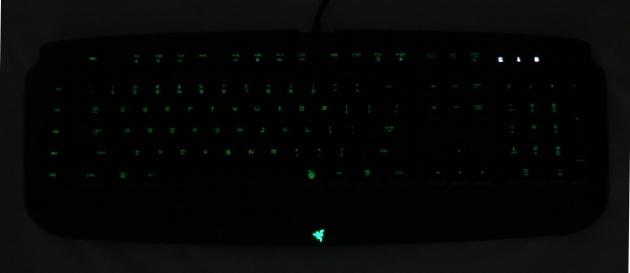Review: Razer Anansi
We put Razer's MMO-focused keyboard to the test

It terrifies me how much time I spend pushing buttons. Whether it’s slaying undead in Guild Wars 2 or butchering grammar in Microsoft Word, my hands are usually hammering keys of one sort or another.
This makes finding the right keyboard a struggle. I want a keyboard that’s packed with enough features to cope with my gaming demands, yet comfortable enough to use for hours at a time. With dedicated macro keys and a gentle typing profile, Razer’s Anansi keyboard offers the best of both worlds.
Unpacking the Anansi presented me with a black carton, emblazoned in green with ‘For Gamers, By Gamers.’ It’s an overused phrase, but in Razer’s case it reflects the firm’s ethos of designing products for the games they themselves play. With the Anansi, it’s clear that some of the more unusual quirks are the result of hundreds of hours sunk into a mix of MMOs.
Sitting on my desk, the Anansi was very sleek, with a clean and striking appearance. The minimalist lines and matte-black finish give it the semblance of a button festooned stealth bomber. A thick, sturdy cable leashed the keyboard to my PC, as if it might leap off and devour lesser peripherals. The braided cable ends in two USB connectors in order to power the board’s backlighting, illuminating all keys apart from a small cluster of macro buttons below the spacebar.

That said, the light show didn’t start immediately; it wasn’t until I downloaded and installed the drivers that the backlight started cycling through a rainbow of colors. The Anansi isn’t yet supported by Razer’s Synapse cloud-based configuration tool, meaning that Naga fans will need two pieces of software to configure their peripherals.
Razer’s software covers almost everything you’d expect from a keyboard configuration, including macro recording and full rebinding for every key on the board. It’s even possible to bind keys so that they launch applications directly, putting your favourite MMOs at the touch of a button. Collections of settings can be stored in profiles, which can either be chosen manually or invoked when a game launches.
The Anansi software also provides full control over the backlighting color and intensity, allowing me to co-ordinate it with the other accessories on my desk. Disappointingly though, it wasn’t possible to tie a color to a particular game profile – I’d like to be able to hop from Warcraft blue, via Planetside 2 purple to Guild Wars 2 red, when I’m using a profile associated with that game.
With both a slim design and a low profile, the Anansi hugs the desk tightly. The key tray has a gentle curve toward the back, plus the keys don’t stand too proud from the keyboard, making it easier to glide fingertips over them in order to type rapidly. The shallow angle and extended wrist platform also help to minimize wrist strain, making the Anansi very comfortable to use.

The keys themselves are rubber membrane with plastic caps, although there’s more rigidity to them than other similar keyboards I’ve used. While it means the initial force needed to push down is higher than I’m used to, it also means that keys are much less likely to trigger accidentally.
I was hesitant about macro key placement on the Anansi, particularly with seven thumb keys placed below the spacebar. Remarkably though, it’s a design that works. When used as a replacement for shift or ctrl, the thumb movement is much more reliable and natural than the traditional pinkie finger curl. The thumb buttons also make great push-to-talk keys, especially in a game like Planetside 2 with four different in-game VOIP channels. It means that you’re not compelled to get a button-heavy Naga if the mouse isn’t your first choice. A strip of 5 regular keys on the left completes the macro-ready set.

In common with many gaming keyboards, the Anansi doesn’t have a strip of dedicated media buttons. Instead, the ‘Fn’ key provides access to media and volume controls, as well as Windows key disabling and on-the-fly macro recording. Both are nice touches, but I’ve found that it’s generally better to configure a gaming profile and associated macros in advance of a raid or in-depth gaming session, rather than in-flight.
Overall, the Razer Anansi is a keyboard that remains comfortable to use while you clock up the hours in front of your PC, something that’s vital for almost every MMO gamer. The thumb macro keys do take a little getting used to, but the placement is ideal for those of us who hop from MMORPG to MMOFPS. Unfortunately it’s in the software where the Anansi falls slightly short, both with the lighting control and the lack of integration with Razer’s Synapse service. Both of these are minor complaints though, and definitely don’t detract from the keyboard’s main purpose.
Weighing the Anansi against mechanical keyboards is a little more difficult though, and one that comes down to personal preference. Personally, I find that mechanical keyboards are great for gaming but terrible for anything else, pushing them into a tight niche that demands a second keyboard for hammering out prose. The Anansi eliminates that duplication, performing both roles well. If you’ve been put off mechanical keys, the Anansi should be a very strong consideration.
The Anansi is available for $99.99, €99.99 or £89.99 direct from Razer, and comes in a number of different keysets to suit the US and Europe.
Gareth “Gazimoff” Harmer, Senior Contributing Editor